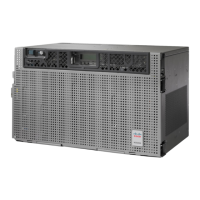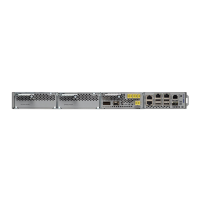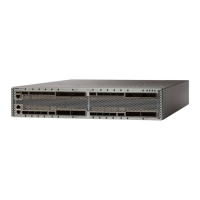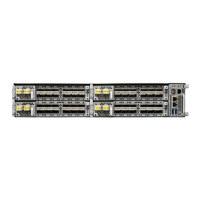d) Decrease the attenuation on the VOA to the minimum (0 dB) to enable channel startup. To perform this in field
adjustment:
• Read the VOA Attenuation Ref value for the channel (wavelength).
• Enter the same value into the VOA Attenuation Calib field as that of the VOA Attenuation Ref field, but with
the opposite sign (the algebraic sum of the two contributions must be equal to zero).
• Click Apply. If the LOS-P alarm persists, continue with this procedure. Otherwise, the problem has been
corrected.
e) Click Circuits.
f) Recreate the OCHNC circuit and verify that Circuit Status field reports DISCOVERED and the state is IS (Unlocked).
g) If the LOS-P alarm has not cleared, replace the 32MUX-O or 40MUX card (refer to the Upgrade, Add, and Remove
Cards and Nodes chapter of the Configuration guide). Before you replace the card, log into the Technical Support
Website at http://www.cisco.com/techsupport for more information or call Cisco TAC (1 800 553-2447) in order to
report a service-affecting problem).
High-performance devices on this card can get hot during operation. To remove the card, hold it by
the faceplate and bottom edge. Allow the card to cool before touching any other part of it or before
placing it in an antistatic bag. Statement 201
Warning
Scenario B: Optical Power Level of the Incoming Signal Lower Than Expected
In some cases, the pass-through channels on the WSS card or the optical bypass channels on the 32MUX-O
or 40MUX card are at a power level that is lower than expected. The incoming power level can be lower than
expected for several reasons. A few examples are:
• Dirty connections
• Excessive span loss
• Wrong amplifier gain setting
When the power is lower than expected, the start-up procedure can stop at Phase 1, Phase 2, or Phase 3 . The
point at which the start-up procedure stops depends on the amount of power missing.
Given that Delta Power is the amount of optical power missing compared to the expected value, two final
conditions for Scenario B can be identified, Conditions B1 and B2.
Condition B1—Delta Power > 6 dB (LOS-P Alarm)
When the optical power is more than 6 dB lower than the expected value, the final VOA Power Reference
setpoint value is definitively not reachable and even Phase 1 of the start-up procedure cannot be properly
completed. As a consequence, the final condition reported in CTC is the same as that of Scenario A:
• A LOS-P (OCH layer) alarm is present on the port associated with the VOA.
• A valid optical power value (different from the end of scale value of – 50 dBm) can be read in the Power
field, but the value for Power is less than –33 dBm. (To access this value, in card view, click the
Provisioning > Parameters tabs.)
Cisco NCS 2000 series Troubleshooting Guide, Release 11.0
86
General Troubleshooting
Scenario B: Optical Power Level of the Incoming Signal Lower Than Expected
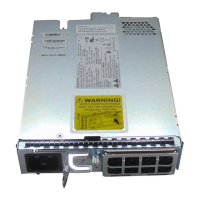
